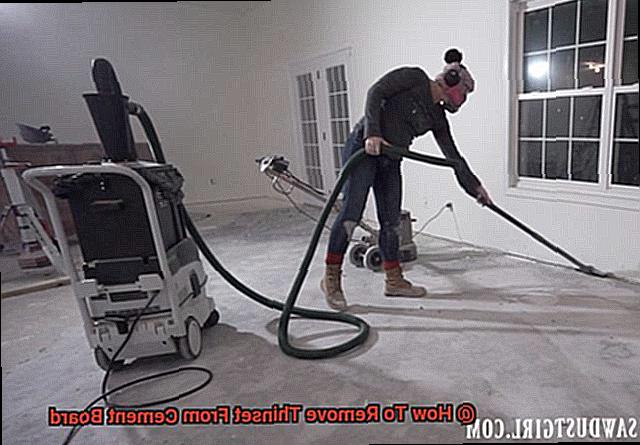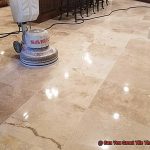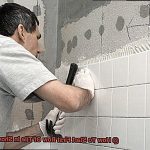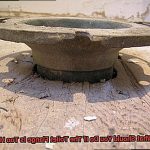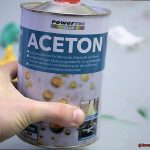Want to know how to remove thinset from cement board? You’re in the right place. Thinset is a common adhesive used in tiling jobs, but it can be tricky to remove. Don’t worry, we’ve got all the tips and tricks you need.
In this blog post, we’ll explain everything you need to know about removing thinset from cement boards. We’ll discuss different types of thinset and how they interact with cement boards, as well as the best tools and techniques for removing thinset.
So if you’re ready to get started, read on.
Contents
- 1 What is the Easiest Way to Remove Thinset from Cement Board?
- 2 What Tools are Necessary for Removing Thinset from Cement Board?
- 3 Step-by-Step Guide on How To Remove Thinset From Cement Board
- 4 Safety Precautions When Removing Thinset from Cement Board
- 5 Common Mistakes Made When Removing Thinset from Cement Board
- 6 Tips and Tricks for Easier Removal of Thinset from Cement Board
- 7 How to Clean Up After Thinset Removal from Cement Board
- 8 Alternatives to Thinset Removal from Cement Board
- 9 Conclusion
What is the Easiest Way to Remove Thinset from Cement Board?
Removing thinset from cement board can seem like a daunting task, but it doesn’t have to be! With the right tools and safety precautions, you can easily get the job done.
The easiest way to remove thinset is to use a heat gun. This tool will soften the thinset, making it much simpler to scrape off. However, it’s important to remember to wear protective gear such as safety glasses, gloves, and a dust mask when using a heat gun.
If you’re looking for an even more efficient way of removing thinset, an electric grinder with a diamond blade is your best bet. This method requires more skill and caution due to the potential for sparks and dust inhalation. To reduce these risks, keep the blade wet while cutting.
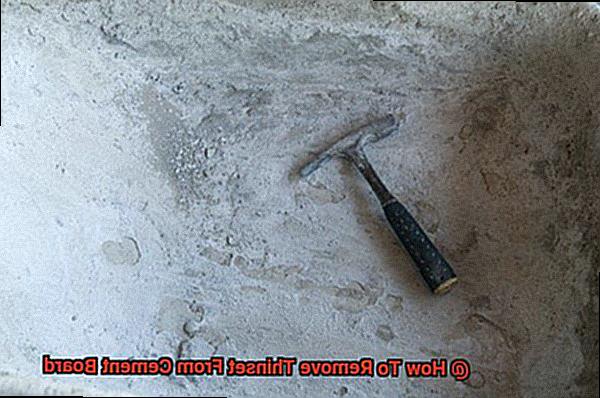
It’s important to note that both methods can cause damage to the underlying cement board if not done properly. So make sure you take the necessary precautions when using either of these tools.
What Tools are Necessary for Removing Thinset from Cement Board?
Removing thinset from cement board can be a difficult task, but with the right tools and techniques, it’s possible to do it quickly and effectively. Whether you’re working on a DIY project or hiring a specialist, having the right equipment is essential for getting the job done right.
A masonry chisel is the most important tool for removing thinset from cement board. This heavy-duty knife has a sharp, pointed tip that can be used to chip away at the hardened steel and break it into smaller pieces. A grout saw or oscillating multi-tool can also be used to cut through thick layers of thinset and remove large sections of damaged cement board.
In addition, a hammer and cold chisel can also be used to break up the material before it is discarded in smaller amounts. A putty knife can also help scrape stubborn pieces of thinset from the cement board’s surface. Finally, a vacuum cleaner with a crevice tool attachment is ideal for removing dust and debris after the thinset has been removed.
Having all these items on hand will ensure that your project goes as smoothly as possible, with the best results when removing thinset from cement board.
Step-by-Step Guide on How To Remove Thinset From Cement Board
Unsticking thinset from cement board can be a tricky task, but with the right tools and materials, it’s possible. Follow this step-by-step guide to get you on your way.
First, make sure you have all the essential equipment for the job. This includes a putty knife, safety glasses, a hammer, a chisel, a drill with a masonry bit, an air compressor and nozzle, and a vacuum cleaner. For extra protection from any flying debris, don’t forget to put on your safety glasses.
Start by using the putty knife to break up the thinset that is stuck to the cement board. Then use the hammer and chisel to chip away at any remaining thinset still attached to the surface of the cement board.
To remove stubborn pieces of thinset, drill into them with a masonry bit. To blow away any loose pieces of thinset from the surface of the cement board, use an air compressor and air nozzle.
Finally, after removing all of the thinset from the cement board surface, vacuum up all of the debris in your work area.
Safety Precautions When Removing Thinset from Cement Board
Safety should always be your top priority when removing thinset from cement board. To protect yourself, make sure to wear the necessary protective gear, such as gloves, glasses, and a mask.
Additionally, ensure that the area is well ventilated to avoid inhaling any hazardous particles. Furthermore, cover the area with a drop cloth or tarp to avoid any damage to the floor or walls. When using power tools such as grinders or saws, take extra caution and use proper safety equipment and knowledge of how to safely use them.
Lastly, keep children and pets away from the area during this process for their safety.
Common Mistakes Made When Removing Thinset from Cement Board
Removing thinset from cement board is a tricky and potentially hazardous task, but with the right equipment and precautions, it can be done safely and efficiently. Here are five common mistakes to avoid when stripping thinset from cement board:
Not wearing protective gear
Never forget to protect yourself with safety goggles, gloves, and a dust mask when removing thinset from the cement board.
Not using the right tools
Make sure you have the correct tools for the job, such as a hammer and chisel or an electric grinder. Using the wrong tool may damage your cement board or even cause injury.
Not preparing the area
Before starting any project, take the time to clear away any furniture or other items that could get in your way while working.
Not cleaning up after yourself
When working with thinset and cement board, it’s essential to clean up afterwards, as it can be dangerous if left lying around. Make sure you dispose of any debris properly and clean up any mess you make while removing thinset from cement board.
Tips and Tricks for Easier Removal of Thinset from Cement Board
Removing thinset from cement board can be a tedious and time-consuming process. But with the right tools and techniques, you can make the job easier and get it done quickly. Here are seven tips and tricks for detaching thinset from cement board.
Begin by gently scraping any loose pieces of thinset off the cement board with a putty knife. This will make it much simpler to remove the remaining thinset without damaging the cement board.
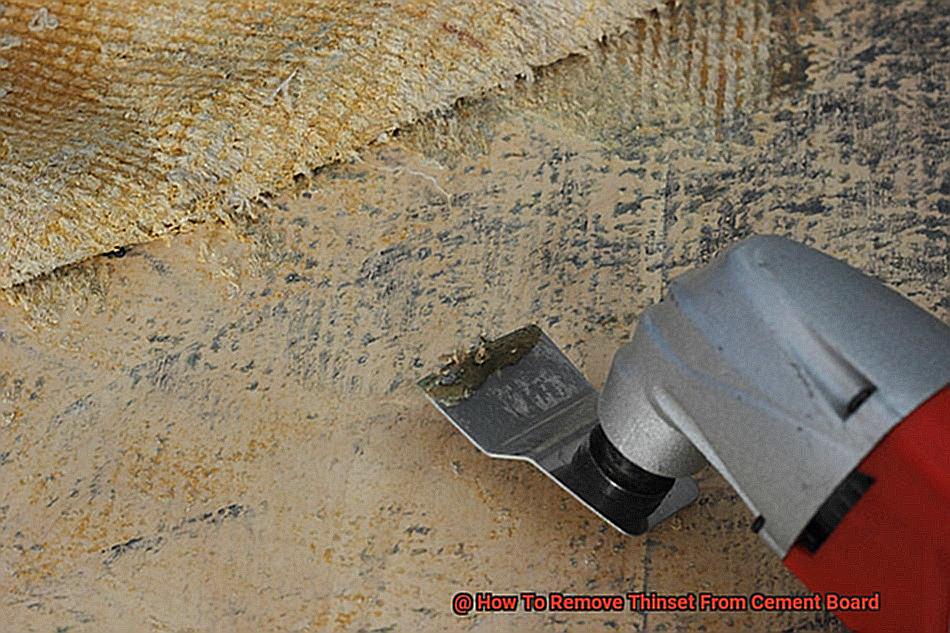
Cut through any stubborn pieces of thinset with a grout saw or an oscillating multi-tool with a carbide blade. This will help you get into tight corners and remove any hard-to-reach pieces of thinset that won’t come off with only a putty knife.
Soften the thinset before breaking it off with a putty knife by using a heat gun. The heat from the gun will help break down the thinset, making it much easier to remove with little effort.
Use a chemical stripper such as methylene chloride or xylene to dissolve the thinset before scraping it off with a putty knife. When using chemicals, always wear protective gear and follow all safety instructions on the packaging for safe use and disposal of these products.
Wear protective gloves when scraping, cutting, or grinding thinset from cement board, as this can be very abrasive and cause skin irritation.
Make sure to wear safety glasses when using power tools, and always follow the manufacturer’s instructions for safe use and operation of these devices.
If all else fails, use a hammer and chisel to break up any remaining pieces of thinset before using other methods for removal. This will make it much simpler to get rid of any stubborn parts that won’t be compatible with other methods.
How to Clean Up After Thinset Removal from Cement Board
Removing thinset from cement board is an essential step in the tiling process. Properly cleaning up after removing thinset can ensure that no smears of new tiles interfere with the adhesion. Here are five simple steps to properly clean up after removing thinset from cement board.
Vacuuming
Using a vacuum cleaner with a soft brush attachment is the first step in sanitizing thinset from a cement board. This will help remove any dust and debris, ensuring that all of the thinset residue has been cleared away from the surface.
Wiping Down
To remove any remaining bits of thinset, use a damp cloth or sponge to wipe down the surface of the cement board. Be sure to rinse your cloth or sponge often so that it doesn’t become clogged with residue.
Drying
To dry off the surface of the cement board before applying new tiles, use a dry cloth or paper towel. This will help ensure that there is no moisture on the surface that could cause adhesion problems later on.
Adhesive Removers
If you’re using an adhesive remover, make sure to follow the manufacturer’s instructions for proper cleanup and disposal. Many adhesive removers contain hazardous chemicals, so it’s important to dispose of these products in accordance with local regulations and safety standards.
Disposal
After removing the thinset from the cement board, make sure that all of the rubble has been disposed of properly in accordance with local codes and safety standards. This will help keep your work area clean and free of any potential risks posed by improper disposal techniques.
Removing thinset from cement board can be a tricky task, but following these steps can ensure that your tile installation goes as smoothly as possible and looks great for years to come! With just a few simple steps, you can be confident that all of your hard work pays off in stunning results!
Alternatives to Thinset Removal from Cement Board
Removing thinset from cement board can be a daunting task. But don’t worry! There are alternatives to help you tackle the job with ease.
One option is to simply apply a new layer of thinset over the existing one. If the current thinset is still in good condition, this could save you time and effort.
Alternatively, you might opt for a self-leveling compound to create a smooth surface on top of the existing thinset. This will help flatten any unevenness or bumps caused by the thinset’s growth.
If necessary, an epoxy or other adhesive remover can also be used to soften and dissolve the existing thinset before scraping it off with a putty knife or other tool.
Finally, as a last resort, you may consider using a grinding wheel or sander to remove the thinset from cement board surfaces, but be warned: if not done properly, this could damage the cement board’s surface.
Conclusion
Removing thinset from cement board can be challenging, but it doesn’t have to be! Tackle this job like a pro with the right tools, methods, and safety precautions.
From using a diamond blade or electric grinder to chiseling, drilling, and vacuuming away rubble, there are several ways to get the job done quickly and safely.
Alternatively, you could apply a new layer of thinset or use a self-leveling compound to create an even surface.
Whatever method you choose, make sure to wear protective gear and follow all safety instructions.

